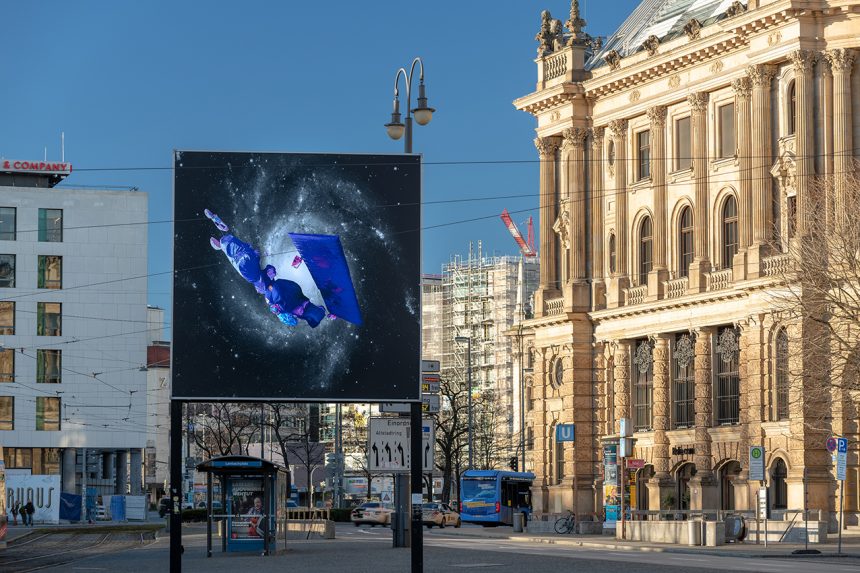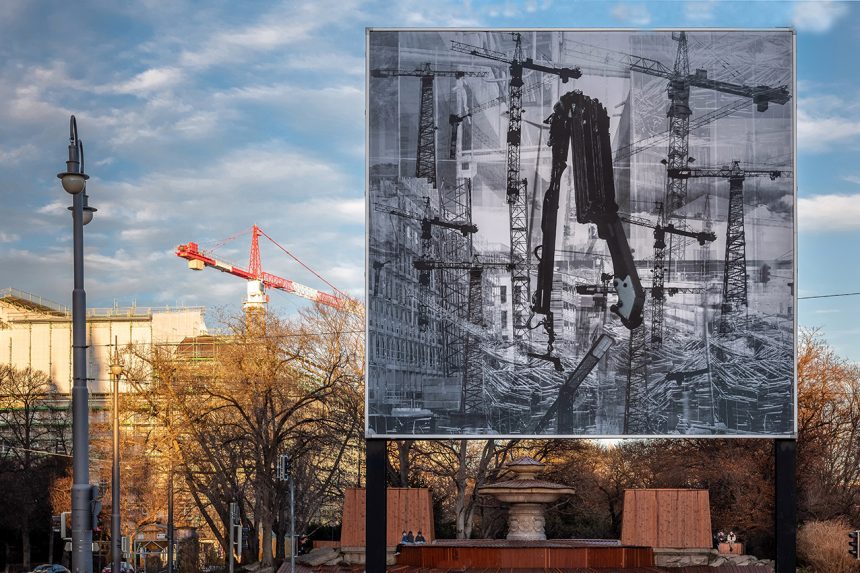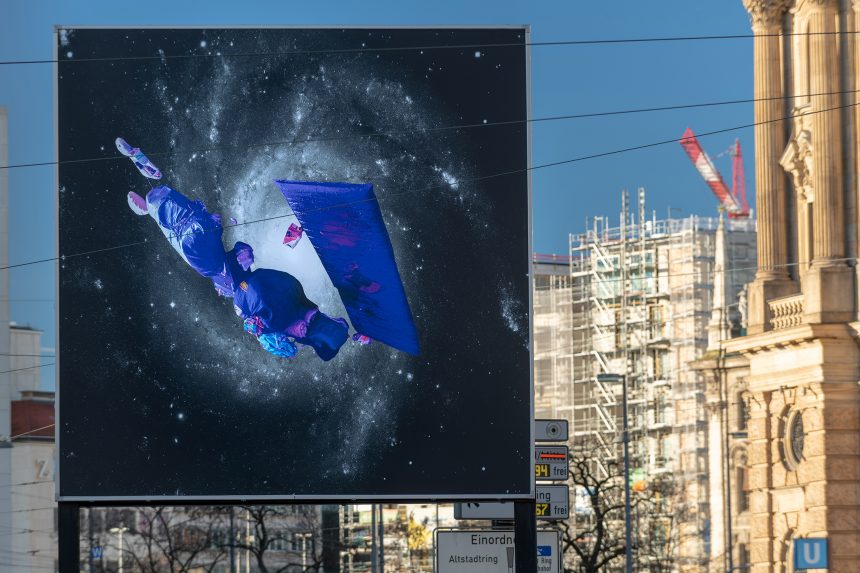this land was made for you and me
this land was made for you and me thematisiert die Entwicklung unseres Stadt- und Lebensraums und die damit einhergehenden sozialen Verwerfungen.
Was bedeutet „Zuhause“ für Menschen, die kein festes Zuhause besitzen? Die auf der Straße leben und ihre wenigen Habseligkeiten zumeist mit sich tragen? Was heißt es in unseren kontinuierlich wachsenden Städten als Obdachlose zu überleben und sich einzurichten? Das „Zuhause“ reduziert sich auf wenige lebensnotwendige Dinge wie Schlafsack, Pappe, Decke, Rucksack etc. Manchmal bleiben diese Utensilien tagsüber an einem festem Platz zurück, aufgeräumt am Gehsteig, unter einem Mauervorsprung, in einer Arkade: Ein fester Ort der Aufbewahrung wird in der Stadt zum „Zuhause“.
Gleichzeitig wachsen und verändern sich unsere Städte kontinuierlich. Die Städte werden enger, der Raum begrenzter. Endlos in den Himmel wachsende Baustellenlandschaften in Grautönen, Steinwüste – „blattlose Städte“ (Italo Calvino). Kräne – Sinnbild für Prozess und Konstruktion – zeugen von Gentrifizierung und Verdichtung unseres Lebensraums. Es wird entmietet, gebaut, luxussaniert. Wer profitiert? Wer kann mithalten? Wer sind die Verlierer? Wer fällt raus?
Ein Schlafsack fliegt ins Universum. Es ist nicht mehr der Knochen, der als Werkzeug in Stanley Kubricks 2001: Odysse im Weltraum in neue Galaxien schwebt. Er verwandelt sich auch nicht in ein spaceshuttle, das in andere, vielleicht bessere Welten unterwegs ist. Es bleiben ein Schlafsack und häufig ein vergebliches Träumen.
„This land was made for you and me“, aus dem Song This Land Is Your Land von Woody Guthrie, 1940
Fotodokumentation: Achim Schäfer
This land was made for you and me addresses the development of our urban and living space and the social distortions that accompany it.
What does „home“ mean for people who do not have a permanent home? Who live on the streets and mostly carry their few belongings with them? What does it mean to survive and settle in our continuously growing cities as homeless people? The „home“ is reduced to a few essential things like sleeping bag, cardboard, blanket, backpack etc.. Sometimes these utensils are left in a fixed place during the day, tidied up on the sidewalk, under a wall ledge, in an arcade: a fixed place of storage becomes „home“ in the city.
At the same time, our cities are continuously growing and changing. Cities are becoming narrower, space more limited. Endless construction site landscapes growing into the sky in shades of gray, stone desert – „leafless cities“ (Italo Calvino). Cranes – symbol of process and construction – bear witness to gentrification and densification of our living space. People are renting out, building, luxuriously redeveloping. Who profits? Who can keep up? Who are the losers? Who falls out?
A sleeping bag flies into the universe. It is no longer the bone that floats into new galaxies as a tool in Stanley Kubrick’s 2001: A Space Odyssey. Nor does it transform into a space shuttle bound for other, perhaps better worlds. What remains is a sleeping bag and often futile dreaming.
„This land was made for you and me“, from the song This Land Is Your Land by Woody Guthrie, 1940
Photo documentation: Achim Schäfer
Details
- Jahr: 2021/2022, temporär
- Material: Digitaldruck, 500 x 500 cm
- Orte: Lenbachplatz, München



